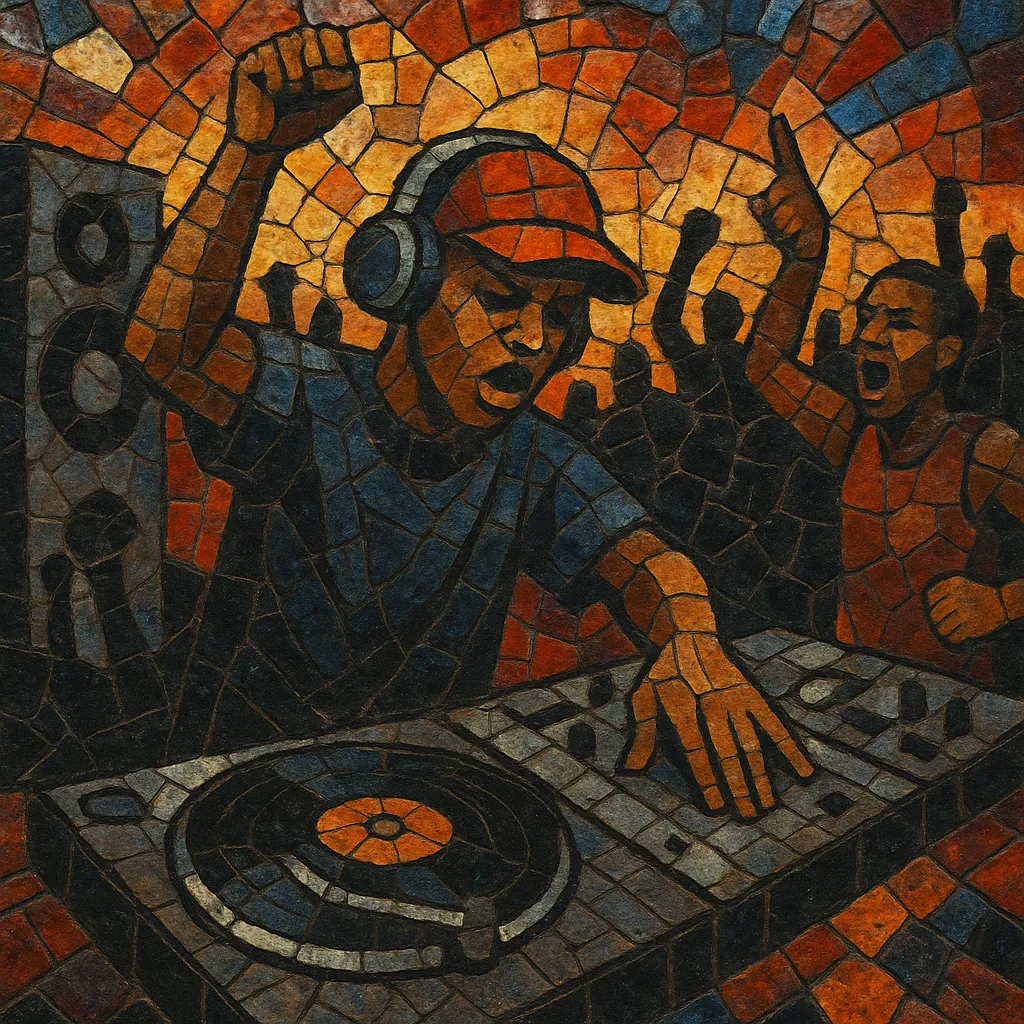
Philly club rap is a high-energy party-rap style from Philadelphia that fuses the city's homegrown club music with contemporary hip hop flows. It typically runs at 135–145 BPM and foregrounds stomping, syncopated kick patterns, chopped vocal shouts, and sparse, percussive arrangements designed for dance.
Compared with closely related Jersey club rap, the Philly variant is often rougher and more percussion-led, leaving open space for dancers and crowd call-and-response. Hooks tend to be shouted, chant-like refrains built around local dance moves (the Shake, the Rock, the Bop), while verses switch between clipped, staccato bars and breathless hype-man cadences.
Philadelphia has had a club tradition adjacent to Baltimore and, later, Jersey club since the late 2000s, with local DJs and producers adapting chopped breaks, bed‑squeak stabs, and stop–start drum edits to the city's party scene. Figures like DJ Sega helped shape a distinctly Philly take on club tracks, setting the stage for MCs to ride these rhythms.
Through the 2010s, Philly party records and street rap began to intersect with club beats in skating rinks, school gyms, and local functions. Rappers experimented with short, call-and-response hooks over sparse, pounding drums, creating a template that privileged dancers and crowd participation as much as lyrical density.
In the early 2020s, the sound exploded on social platforms via local dance challenges. Crews such as Philly Goats (with D Sturdy) and artists like 2Rare, Lay Bankz, Zah Sosaa, and D4M $loan popularized chant-driven hooks over 140 BPM club instrumentals. Tracks like Philly Goats’ “Shake Dhat” (produced by DJ Crazy) catalyzed a wave of videos highlighting Philly-specific moves.
Lil Uzi Vert’s “Just Wanna Rock” (2022), while rooted in the broader Jersey/Philly club continuum, brought the bounce and cadence to global attention, helping cement Philly club rap as a recognizable lane within contemporary American rap.
The genre now freely cross-pollinates with Jersey club, drill-adjacent rhythms, and mainstream pop/rap. Its emphasis on movement, chant hooks, and percussive minimalism continues to shape the kinds of rap records designed for dance floors and short-form video.

